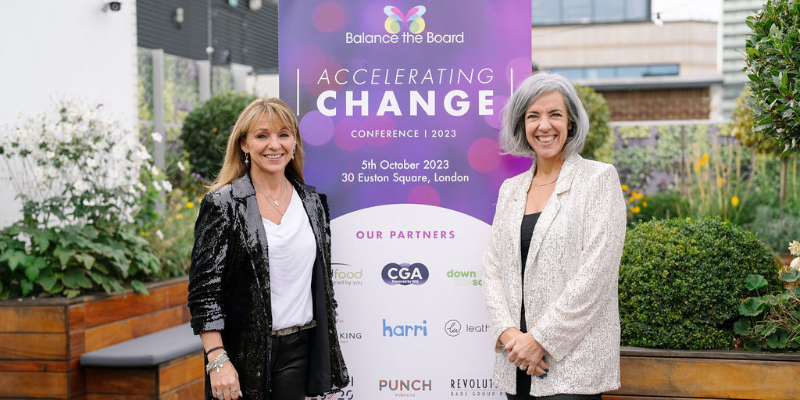
With many organisations making equity a key priority in their environmental, social and governance (ESG) programs, women are watching to see if it emerges as more than just a buzzword. Working towards gender parity in leadership is the right thing to do for women -- and it’s good for business.
Women and underrepresented communities want greater equity in leadership roles. According to Gallup’s most recent data, one in two women report diversity and inclusion as a very important factor in their decision to take a job. Having women in leadership increases engagement and proves that an organisations values are real. And attracting and retaining talented, high-performing employees takes more than competitive pay -- for women, it requires investment in their growth.
As organisations face high rates of retirement in leadership, fallout from the Great Resignation and uncertainty about what the future workforce wants in a job, putting a strategy in place for women’s leadership development is vital for organisations to remain relevant and sustain growth.
Ready for opportunities to lead, Gallup research shows 45% of women would like a CEO or senior management role even if that requires working 50+ hour per week, but women only account for 23% of U.S. senior business roles. So how do organizations develop female leaders? Until now, most have focused on mentorship as a key component of leadership development, but mentors alone have yet to get women to the top -- and these programs aren’t compelling enough to retain talented female employees in a competitive market.
Mentorship Is Important -- But It’s Not Enough
While career advancement depends on different variables for each organization or role, four elements are fundamental: talent, ambition, development and opportunity. A person’s talent -- or natural capacity for excellence in a role -- is often a starting place for planning their career path. Demonstration of their interest in and ambition for advancement can speed up progression.
In addition to job-related training, mentors serve a well-documented role in helping people develop. They listen, provide support and trust, coach, and share advice based on their experience. Acting as guides, mentors may lead their mentees through a series of structured and/or informal learning experiences to enhance awareness and build capability. But what mentors can't always offer is opportunity -- something women in the workplace can’t wait on anymore.
The Women Leaders of Tomorrow Need Career Investors Today
While many successful leaders would point to their own motivation, strategy and performance as factors in their career progression, most also note that in a critical moment, someone gave them a chance.
To ensure that high-potential leaders have the chance to showcase their talent, ambition and development, they need a career investor.
Career investors are different from mentors in that they:
Recognize a person’s potential.
Find opportunities to highlight that person’s potential.
Put something of value -- reputation, client relationship, future business chances -- on the line to give that person an opportunity.
While one person could serve as both a career investor and mentor for a high-potential leader, oftentimes individuals who excel as career investors aren’t necessarily drawn to traditional mentorship. People who enjoy mentoring find satisfaction in providing support and encouragement to others; investors are people with influence and capital who are willing to use it for a purpose.
Career investors look for ways to get a return on their human capital investment: They bring together potential and opportunity to spark advancement.
To help women advance in their careers, they need mentors and investors. Investors empower women by using their own significance, leadership status or network to provide a platform for a female employee’s accomplishments to shine. This investment often results in visibility and career acceleration that mentorship perhaps doesn’t, especially in industries and environments without a precedent of women in leadership.
What Makes a Good Career Investor?
Finding good career investors is an important next step to improving how organizations develop women leaders.
Career investors:
are respected people in leadership roles or positions of power
can spot high-potential talent in others
are in a position of influence and can effectively use their organizational knowledge
can provide career opportunities or advocate for them
are willing to take calculated risks and put something of value on the line
Driven by their natural inclination to use their influence to empower others, some career investors may choose this role, but others may need encouragement from their organization to embrace the responsibility. Organizations benefit from finding and nurturing career investors because it helps their employees advance and gives those who aren’t drawn to mentorship a way to add value and define their legacy.
Two people are empowered in this equation: the female employee getting an opportunity that could change the course of her career and her investor who gets fulfillment from providing the capital for that opportunity.
But what mentors can't always offer is opportunity -- something women in the workplace can’t wait on anymore.
The Organization’s Responsibility
Female employees shouldn’t be obligated to find their own career investor because they’re likely already managing disproportionate societal and professional expectations. Women often work two jobs -- as caregivers and employees -- and shouldn’t have to make fighting for career growth a third.
Organizations aiming for gender equality in leadership must evaluate their commitment to leadership development and distribute responsibility for enabling and fostering career advancement for women.
This means making these initiatives a priority: create a clear strategy for women to advance, get buy-in from executive leaders to set the example and allocate funds accordingly, and clarify a career path for all employees through organized and well-communicated processes. Identifying career investors and setting the right expectations for them can be a powerful catalyst to advance high-potential female leaders.
In a recent Gallup study, 31% of women reported feeling always or very often burned out, and 65% were disengaged at work, issues compounded by the mirage of career growth that never materializes. Helping women advance in their careers requires rethinking job requirements, compensating fairly, providing flexibility that supports work-life integration and offering intentional investment in their development.
Organizations should extend their mentorship opportunities beyond short-term onboarding and help women with high-potential leadership talent find a career investor. The most effective organizations listen to women who want to advance, provide systematic leadership development and offer real opportunities to move up.
Organizations that want to prove they’re committed to equality will make both mentors and career investors accessible to women -- and close the gender parity gap in leadership once and for all.








Sign up to be part of the Balance the Board Community, and we will let you know about upcoming programmes and events.



.png)
